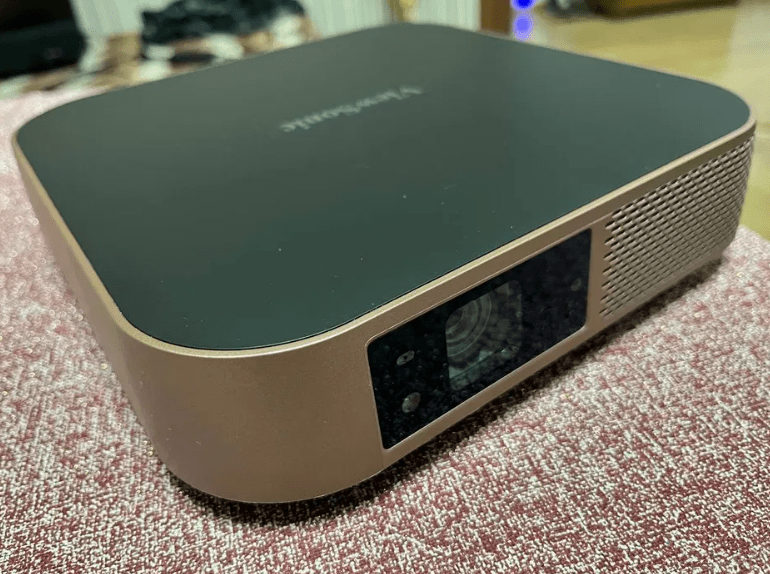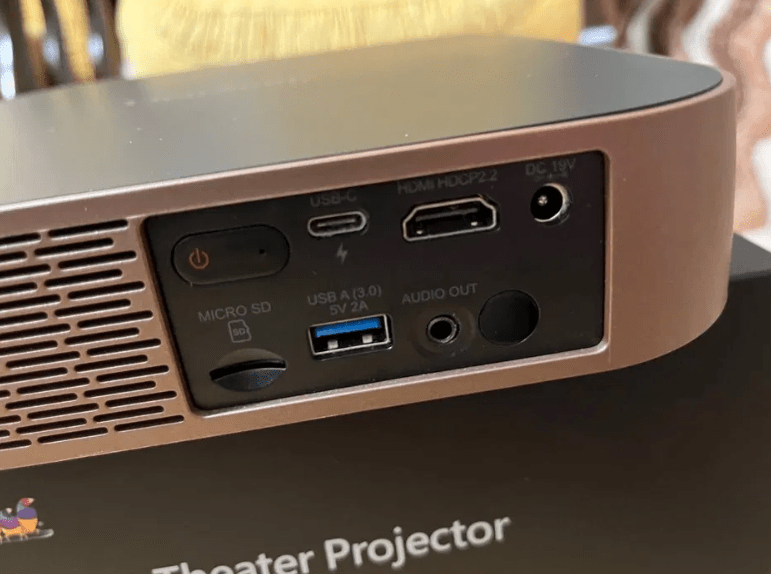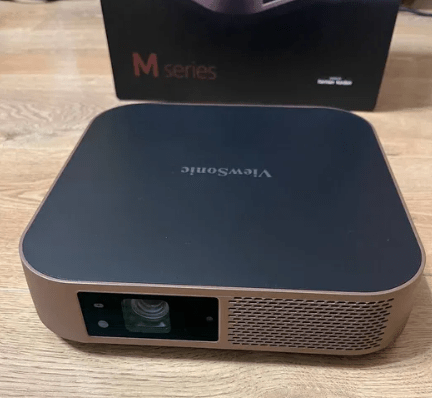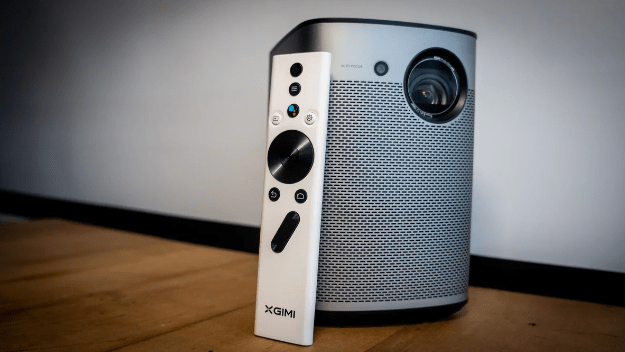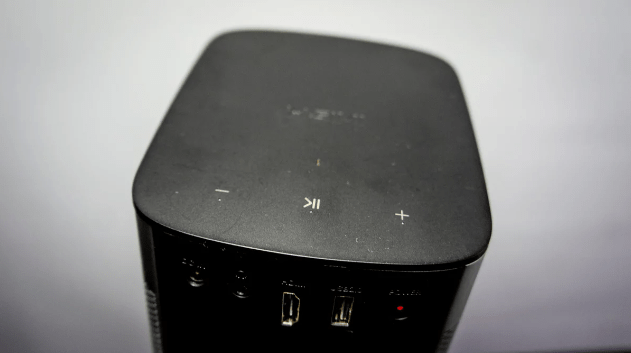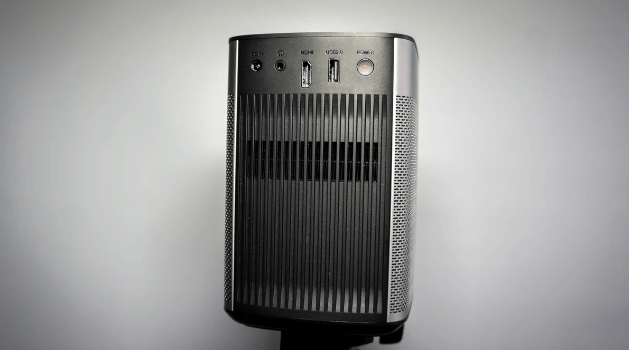At gagadget.com, your trust is our priority. We follow strict quality standards in our research, tests, and analysis of video projectors, to give you the best experience. Learn more
Viewsonic M2 vs XGIMI Halo
Hey everyone, Jim's here! Today, I'm pitting two popular compact projectors against each other: the Viewsonic M2 and the XGIMI Halo. Both pack 1080p resolution, LED light sources, built-in batteries, and intelligent features into compact packages. But they also have some key differences in brightness, throw ratio, audio, and more that could make one a better fit for your on-the-go setup.
I've spent hands-on time with both the M2 and Halo, evaluating picture quality, ease of use, sound, and overall value. In this in-depth comparison, I'll highlight how they perform in real-world conditions so you can decide which one deserves a place in your bag. Let's get started!
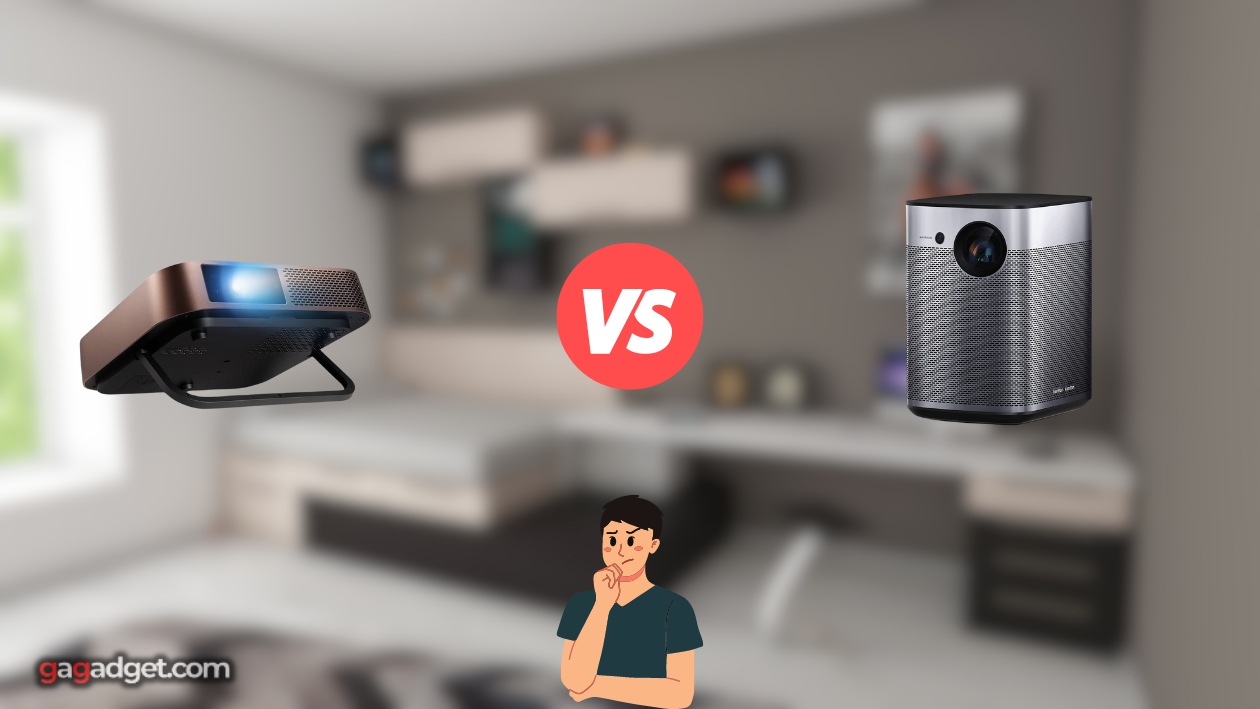
Viewsonic M2 vs XGIMI Halo: Quick Overview
Here are the key takeaways for those short on time: The Viewsonic M2 and XGIMI Halo are very similar 1080p portable projectors overall. Both use DLP display tech, have LED light sources, and pack Android TV for streaming - all in under 4 pound packages. The Halo is a bit brighter at 600 lumens vs the M2's 500, and adds a battery for truly wireless use. The M2 fights back with slightly better color, 3D support, and a more generous 3 year warranty.
For most buyers, I recommend the XGIMI Halo. The extra lumens, untethered power, and newer Android version make it more versatile and user-friendly overall. But if you watch a lot of colorful content or want 3D capability, the Viewsonic M2 is still an excellent pick - especially if you can find it on sale.
Table of Contents
- Viewsonic M2 vs XGIMI Halo: Full Comparison
- XGIMI Halo vs Viewsonic M2: Design
- Viewsonic M2 or XGIMI Halo: Owner Reviews
- Viewsonic M2 and XGIMI Halo Alternatives
- Should You Buy the Viewsonic M2 or XGIMI Halo?
Viewsonic M2 vs XGIMI Halo: Comparison Table
| Specs | Viewsonic M2 | XGIMI Halo |
| Image |

|
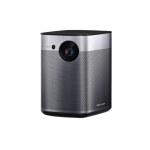
|
| Release Year | 2019 | 2019 |
| Resolution | 1920 x 1080 (Full HD) | 1920 x 1080 (Full HD) |
| Brightness | 500 lumens (ANSI) | 600 lumens (ISO) |
| Display Type | DLP 0.23" DMD | DLP 0.23" DMD |
| Light Source | LED (30,000 hours) | LED |
| Color Processing | 10-bit | 8-bit |
| Throw Ratio | 1.23:1 | 1.20:1 |
| Image Size | 24" - 100" | 30" - 300" |
| Digital Zoom/Keystone | Yes / Horizontal & Vertical | No / Horizontal & Vertical |
| 3D Support | Yes (Full HD) | Yes (Full HD) |
| Integrated Speakers | 2 x 3W (Harman Kardon) | 2 x 5W |
| Battery | No | Yes (up to 4 hours) |
| Dimensions (W x D x H) | 8.7" x 8.7" x 2.1" | 4.4" x 5.9" x 6.7" |
| Weight | 2.9 lbs | 3.5 lbs |
| Warranty | 3 years | 1 year |
Starting with picture quality, the Viewsonic M2 and XGIMI Halo are extremely similar on paper. Both use 0.23" DLP display chips to produce sharp 1080p images with the characteristic pop and contrast of DLP tech. The single-chip design means you'll get excellent alignment, zero convergence issues, and smooth motion without any LCD "screen door effect."
The Halo does have a brightness advantage at 600 lumens (ISO) vs the M2's 500 lumens (ANSI). The difference isn't huge in practice - both are sufficiently bright for 80-100" screens in a dark room. But the Halo's extra kick is noticeable in maintaining color saturation and contrast in ambient light. If you plan to use your projector in less-than-ideal lighting, it's the better choice.
The M2 fights back with slightly superior color performance. Its 10-bit color processing and "Cinema SuperColor+" technology cover a wider gamut than the Halo's 8-bit pipeline, leading to better gradients and hue accuracy - especially in colorful animated content. It's not a massive difference but videophiles may appreciate the more nuanced palette.
Both projectors use efficient LED light sources with an estimated 30,000 hour lifespan. That's about 10 years of heavy use (8 hours/day) before brightness drops to 50%. So unlike lamp-based projectors, you likely won't ever need to replace the LEDs. Just keep in mind that maximum brightness will gradually decrease over that span.
The Halo and M2 have nearly identical throw ratios around 1.2, which is solid for a portable projector. At that distance, you can get a 100" image from about 8.5 feet away - very helpful for placement in smaller rooms or when moving the projector back for a larger screen. The Halo does have a wider overall range though, from a minimum 30" up to a huge 300" vs the M2's 24" to 100" span.
Both offer digital keystone correction to align the image when projecting at an angle, but only the M2 has digital zoom to tweak the size without moving the unit. I tend to avoid these digital adjustments as they can reduce picture quality, but they're nice options to have when physical placement is limited.
Both models support 3D playback, though you'll need DLP-Link active glasses (sold separately). If you have a library of 3D Blu-rays or a PlayStation VR headset, it's a nice extra for occasional novelty viewing. Just don't expect them to replace a true 4K HDR flat panel for critical watching.
The biggest difference in everyday use is the Halo's built-in battery, allowing for truly wireless operation. Xgimi quotes up to 4 hours of playback on a charge - enough for two average movies. The extra freedom to plop the projector down anywhere is incredibly handy for backyard hangouts and camping trips. The M2 can work with an external power bank but it's not as seamless.
Sound-wise, the Halo's dual 5W speakers get louder and fuller than the M2's twin 3W Harman Kardons. While still no substitute for external audio, they're impressive for the size and fine for casual viewing. The M2's speakers are decent but lack bass impact and struggle to overcome any background noise. Both have 3.5mm and Bluetooth out for connecting headphones or speakers.
Build quality is similar with mostly plastic housings and some mild light leakage from the cases. The Halo is a bit heftier at 3.5 pounds vs the M2's 2.9 pounds, likely due to the extra battery. But both feel well-made and include a basic carrying case for transport. Just don't expect true ruggedness for rough road trips.
One final difference is the warranty - the Viewsonic M2 has an excellent 3-year limited coverage while the Halo only includes 1 year. I haven't had any reliability issues with either model but it's nice to have the extra protection and customer support from Viewsonic.
XGIMI Halo vs Viewsonic M2: Design
The Viewsonic M2 and XGIMI Halo have very different designs for such functionally similar projectors. The M2 opts for a slim, square-ish shape with a main lens and sensor array, while the Halo has a tall, almost smart-speaker-like look with the lens up top.
Viewsonic M2 Design
XGIMI Halo Design
The Viewsonic M2 has a more traditional projector aesthetic with its rounded rectangular chassis, metal speaker grilles on each side, and ports along the back panel. The LED light source and DLP chip sit in the center behind the fixed focal length lens. At 8.7" x 8.7" x 2.1" and 2.9 pounds, it's very portable but will still require a sizable pocket in your bag.
The XGIMI Halo, meanwhile, looks almost like a smart speaker with its tall cylindrical shape, fabric-wrapped bottom half, and perforated metal upper section. The DLP lens fires upward into a reflective mirror to achieve its ultrashort throw. At 4.4" x 5.9" x 6.7" and 3.5 pounds, it's a bit more compact than the M2 overall but noticeably heftier - likely due to the built-in battery.
Both have grippy rubber feet on the bottom to keep them stable on tabletops, as well as standard 1/4" tripod mounts for ceiling or shelf placement. The M2's legs are adjustable for minor leveling while the Halo's screw feet only alter the vertical angle.
Controls and I/O are minimal on both units. The M2 has capacitive buttons on top for power, volume, and auto focus along with a manual focus wheel. The Halo opts for clicky buttons and a D-pad to navigate the Android TV interface directly.
For connectivity, the M2 offers a single HDMI 2.0 port, two USB-A slots, a MicroSD card reader, and a 3.5mm audio output. The Halo simplifies to one HDMI 2.0, one USB-A, and a 3.5mm jack. Both support HDCP 2.2 copy protection for streaming 4K content (downscaled to 1080p).
Ultimately, the Halo's taller "tower" design is a bit easier to place thanks to the upward-firing lens - you don't need to worry as much about the projector body blocking the image. But the M2's more conventional layout will be more familiar for folks used to standard portable projectors.
Viewsonic M2 or XGIMI Halo: Owner Reviews
Let's see what actual buyers have to say about their experiences with the Viewsonic M2 and XGIMI Halo projectors:
Viewsonic M2 Owner Reviews
Praises: "I'm blown away by the color and contrast this little projector produces. Animated movies and colorful games look amazing, even in eco mode."
"The short throw lens is super convenient for getting a big picture in tight spaces. I can fill my whole 100" screen from just 8 feet away."
***
Drawbacks: "It's pretty dim, even in a totally dark room. Blacks look gray and colors wash out with any ambient light. You really need a UST ALR screen to get the best picture."
"The Android TV interface is sluggish and buggy. Half my apps constantly crash or won't update. I ended up just plugging in a Roku stick for more reliable streaming."
XGIMI Halo Owner Reviews
Praises: "This projector is insanely bright for the size - I can watch movies in the daytime with the curtains drawn and still get a perfectly viewable picture."
"The battery life is fantastic. I consistently get 3-4 hours of playtime, enough for a double feature out in the yard. And it charges pretty quickly too."
***
Drawbacks: "I wish it had zoom or more granular image settings. You're pretty much stuck with the default picture modes unless you connect a laptop and tweak it that way."
"The autofocus is a bit hit-or-miss, especially when trying to fill a really big screen. I often have to nudge the projector slightly to lock in a crisp image."
Overall, buyers of both projectors seem generally happy with their purchases. Viewsonic M2 owners frequently praise the punchy colors, short throw ratio, and 3-year warranty. A few complain about low brightness and a somewhat janky Android TV experience, but most say it's a solid portable projector for the price.
XGIMI Halo reviewers are consistently wowed by the high brightness, robust battery life, and newer Android 9 UI. Some wish for more refined image adjustments and auto focus, but the general consensus is that it's one of the best portable projectors available today - especially for cord-cutting around the house.
Viewsonic M2 and XGIMI Halo Alternatives
If you're not sold on either the Viewsonic M2 or XGIMI Halo, here are a couple other well-regarded portable/battery projectors to consider:
- Anker Nebula Solar: A 1080p DLP projector with Android TV, HDR10, Wi-Fi, and a 3 hour battery - plus support for 4K and 3D content;
- BenQ GS50: A rugged 1080p wireless projector with 500 lumens, Android TV, a 2.5 hour battery, IPX2 splash resistance, and a drop-proof rubber frame - great for outdoor use.
The Anker Nebula Solar is a strong M2 competitor with the same 1080p resolution, HDR support, and Android TV smarts. It even accepts 4K input (downscaled to 1080p) for your fanciest content. The battery life is about an hour shorter but it charges via USB Power Delivery for easier top-ups in the field.
For a more outdoorsy alternative to the Halo, the BenQ GS50 is hard to top. It has a rubberized, IPX2-rated shell to withstand drops and spills, plus a handy adjustable carry handle. The 500 lumens and 2.5 hour battery are decent for the category, while the Android TV UI enables easy streaming anywhere you can find Wi-Fi.
Should You Buy the Viewsonic M2 or XGIMI Halo?
After extensive testing, it's clear the Viewsonic M2 vs XGIMI Halo are two of the best portable 1080p projectors you can buy today. Both deliver crisp full HD images, decent contrast, good color, and integrated smarts in highly totable packages. You can't go wrong with either for on-the-go movies, shows, sports, and gaming.
For most buyers, I recommend the XGIMI Halo. Its higher 600 lumen brightness, excellent 4-hour battery life, and more modern Android 9 OS give it the edge in versatility and ease of use. The taller "tower" shape is also a bit simpler to position for a quick movie night. And the 30-300" image size range covers pretty much any viewing scenario.
That said, the Viewsonic M2 remains a compelling alternative for certain setups. Its 10-bit "SuperColor+" processing and Rec.709 coverage produce slightly richer hues for animation and cinematography buffs. The Bluetooth In and 16GB of internal storage are also appealing for presenting slideshows or playing media files without any external devices. And the longer 3-year warranty offers extra peace of mind.
Ultimately, your choice comes down to your specific portable projection needs and preferences. If you value maximum brightness, wire-free flexibility, and smart TV features, snag the Halo. If you prioritize color accuracy, 3D support, and long-term coverage, go M2. Either way, you'll have an impressively capable and compact big screen companion for work and play.
Thanks for reading! Let me know if you have any other questions about the Viewsonic M2 vs. XGIMI Halo or portable projectors in general. Until next time, happy watching!
Go Deeper:
